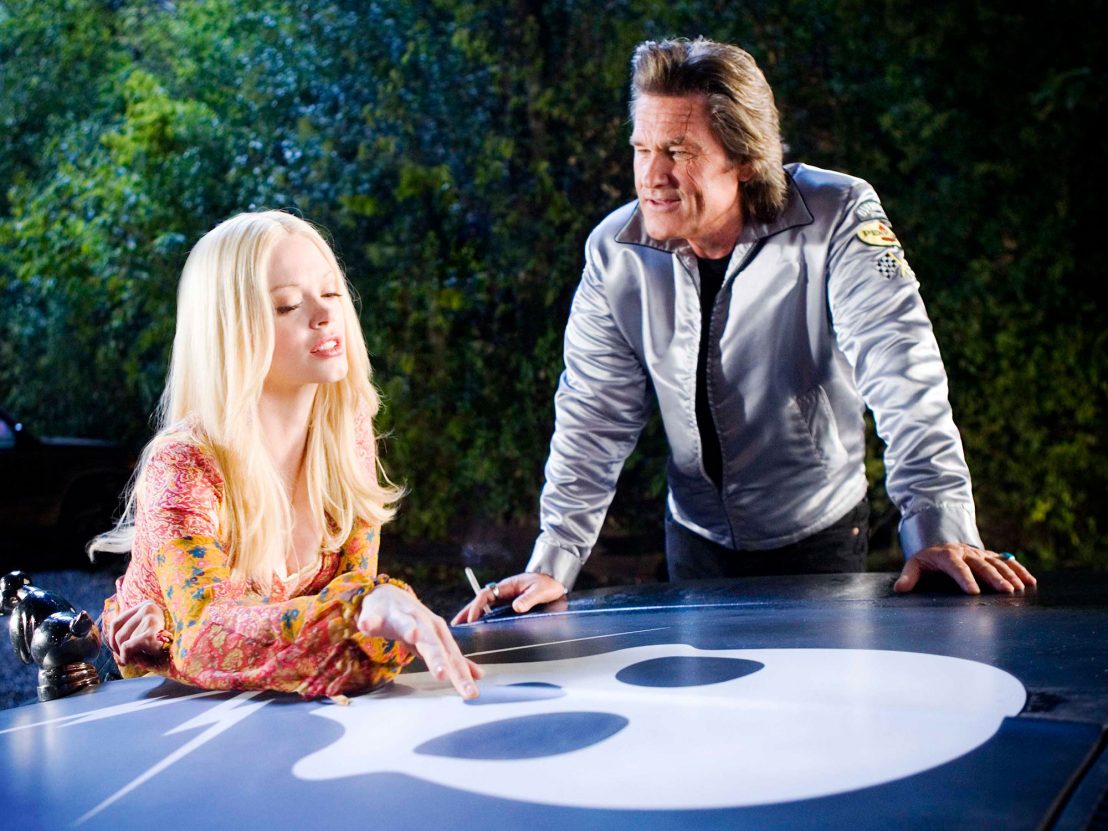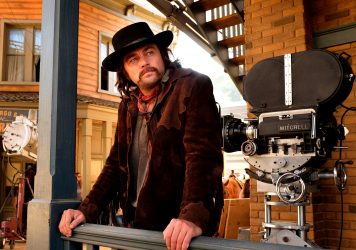
In 1975, the Iranian director Abbas Kiarostami made a short moral fable entitled Two Solutions for One Problem. It fulfilled a creative remit imposed by the Centre for the Intellectual Development of Children and Young Adults, a body that Kiarostami co-founded in 1969 and in which he was an active member.
The film is a simple diptych which espouses peace, tolerance and magnanimity over aggression and petty one-upmanship. It presents two schoolboys – friends turned brief enemies – engaged in a tit-for-tat altercation over a torn school book. The first “solution” suggests that when violence begets violence, there are no winners. The second “solution” sees the situation replayed identically, albeit with the recourse to violence cut short by logical accord. Now hold that though…
In 2007, I descended from the carpeted stairs of the Théâtre Claude Debussy in Cannes with a temperament that could only be described as seething irritation, as if I’d been personally humiliated in front of the 1000-strong audience. I’d attended the press premiere of Quentin Tarantino’s Death Proof, and proceeded to tell anyone who would listen to me (two people, if that?) that it was The Worst Film I’d Ever Seen. I was in a rage. I even took to the pages of this very publication to verbalise my intense dissatisfaction with the work, producing a snarky screed I look now back on now with the same shame-faced resignation I would had I been an active participant of a totalitarian youth movement. They were testing times.
We’ve surely all had personal taste U-turns (PTUs) during our lifetime, but the large majority likely fall mid-spectrum – so mild apathy grindingly shifts to mild enthusiasm upon a dutiful re-watch. Not so with Death Proof. This one made the giant leap, from being a title which slumbered in the fetid sewer of my personal taste canon (PTC), to being a film which I not only consider to easily be the director’s most radical and poetic film, but one of the finest of the new century.
The switch happened around the run-up to the release of Django Unchained, when – like a good widdle cwitic – I took the opportunity of a rare open weekend to re-sweep through the QT corpus. Despite the bitter memories of Cannes, Death Proof was the title I was most excited to revisit, largely because of the passionate and compelling work of critics like Keith Uhlich in unearthing the films’ copious hidden pleasures.
With the box-office bonanzas of both Inglourious Basterds and Django Unchained, Tarantino is now a filmmaker who can do what he wants, when he wants and how he wants. This wide cultural acceptance may be the reason that he now treats Death Proof as the runt of his litter, admitting it to be mis-fire, though never really giving any ample reason why.
There’s the sense that he’s cozying up to his newbie acolytes in agreeing with their general distaste (the film did not, as they say, do boffo box office) and, in doing so, assuring them that he’ll never make the same mistake again. It’s a shame for any director to resort to this sort of gun point self-criticism – unnecessarily tarring throngs of creative collaborators in the process – but for many who don’t buy into his creepy creative mythos, Tarantino’s toadying will have had the reverse effect.
I now can’t help but think of Kiarostami’s beautiful Two Solutions for One Problem when cogitating over Death Proof, itself a diptych – or maybe a cine-couplet? – which also was manufactured as part of a metatexual drive-in double feature with Robert Rodriguez’s Planet Terror. The link may appear tenuous, and maybe it is. Tarantino is offering two “solutions”, but he is ambiguous as to what the “problem” is.
It could be a psychopathic stunt driver named Stunt Man Mike (a peak-form Kurt Russell) who harbours a monomaniacal urge to slaughter groups of young women with his matte-black, battle-hardened 1970 Chevy Nova. It could also be the problem of banal, one-note representations of women in movies. It could be about conventional, linear movie structures and the belief that audiences need to easily understand something in order to empathise with and believe it. Or, it could just be the “problem” of Tarantino making a film which transcends its own magpie referentiality to become something entirely new, surprising, mysterious and – rare for a QT film – open.
Though Two Solutions for One Problem is presented as a finite lesson, yet there’s a poetry in the way it juggles with time. The language of cinema is employed as an apparatus to rectify the sins of the past – it allows us unfettered temporal movement, to take one problem and approach it as many times as necessary until we have reached a satisfying karmic conclusion. Ironically, Death Proof is Tarantino’s only completely linear film, with its second chapter taking place 14 months after the completion of the first. Even though Tarantino makes a joke of the fact, the subtle use of repetition in the dialogue, in the casting and in the motivations of the characters would suggest an unlikely example of history repeating itself. The incredible early hard cut to DJ Jungle Julia twirling her hair in the Texas Chilli Parlour is perhaps the film’s defining image – a hypnotic continuum which just keeps going around and around and around.
The question of autobiography crops up a lot when considering Tarantino’s films, particularly the notion that he is unable to write a character – male or female – who is not in some way a direct extension of his own temperament, desires and, ahem, eccentric personality. Yet there’s something about Death Proof which transcends this swaggering self-projection, like the film also articulates attitudes and feelings too. This is the director sounding off on gun control. This is the director on mass communication. This is the director on the behind-the-camera artisans of the film industry. This isn’t just a projection of personality. This is personality.
Though Tarantino himself stars in a supporting role as Chartruse-chugging barman Warren, the argument is to be made that Stunt Man Mike is a cartoonish manqué of his own job as a cinematic storyteller. The film is about the strictures that job entails. He is being instructed by an unknown force which could be creativity, which could be economics or something more sinister. It’s a force that we’ll never see, and it instructs him to dispatch beautiful women in horrific ways. In the film’s second part, it’s as if he’s admitting that you can’t keep doing that, that the victims will eventually get their comeuppance, they will get wise to your brash tactics. We can keep telling the same stories things ad infinitum. Though there are two individual sets of women in the film, their cosmetic similarities do suggest some kind of rebirth, a statement on the fact that misogyny and violence can have negative repercussions, especially if – like Stunt Man Mike – you’re part of the film industry.
The greatness of this film – and the aspect that Tarantino hinted at, though never fully achieved in Kill Bill Vol II – derives from the extremely poignant touches which humanise these apparently parodical archetypes. Tarantino has his grindhouse cake and eats it, by on one hand creating characters who riff on jive-talking conventions of ’70s drive-in B-movies, but on the other littering the film with near-imperceptible grace notes that humanise and modernise these people. It’s more like a self-questioning Hong Sang-soo movie than it is a piece of roistering fleapit filler.
One of the film’s great moments is near the beginning when Jungle Julia suddenly mutes her combative patter (as displayed in the film’s two preceding dialogue sequences) to fire-off a text message to a beau who she’s due to meet with. She lets her guard down, and like an old master, Tarantino switches from the stomping jukebox ditty to a piece of lilting piano music. It’s an utterly heartbreaking moment of pure vulnerability, made all the more affecting with the suspicion that genre convention dictates she’ll never be able to make that hook-up. It’s not only Tarantino’s best film, but is also his saddest, a fact that’s all the more pronounced considering this melancholy is left to fester underneath its acid-yellow chrome chassis.
Death Proof is a film of duality – these women get to live their lives again and mete out their bloody revenge. But on a micro level, life itself is an example of putting on a mask and then choosing when to let it slip. Movies may allow us to view multiple solutions to a single problem, but Death Proof playfully questions its own logic by suggestions that problems are smaller and more complex than we could ever understand. They are resistant to a binary solution. Only the movies can deal with things in that way.
Published 25 Aug 2015

Accusations that the director’s work is misogynistic for enacting violence against women are wide of the mark.

Our ’90s countdown kicks off with movies from Tim Burton, David Lynch and Hayao Miyazaki.

Once Upon a Time in Hollywood is getting its very own Jake Cahill-themed spin-off.